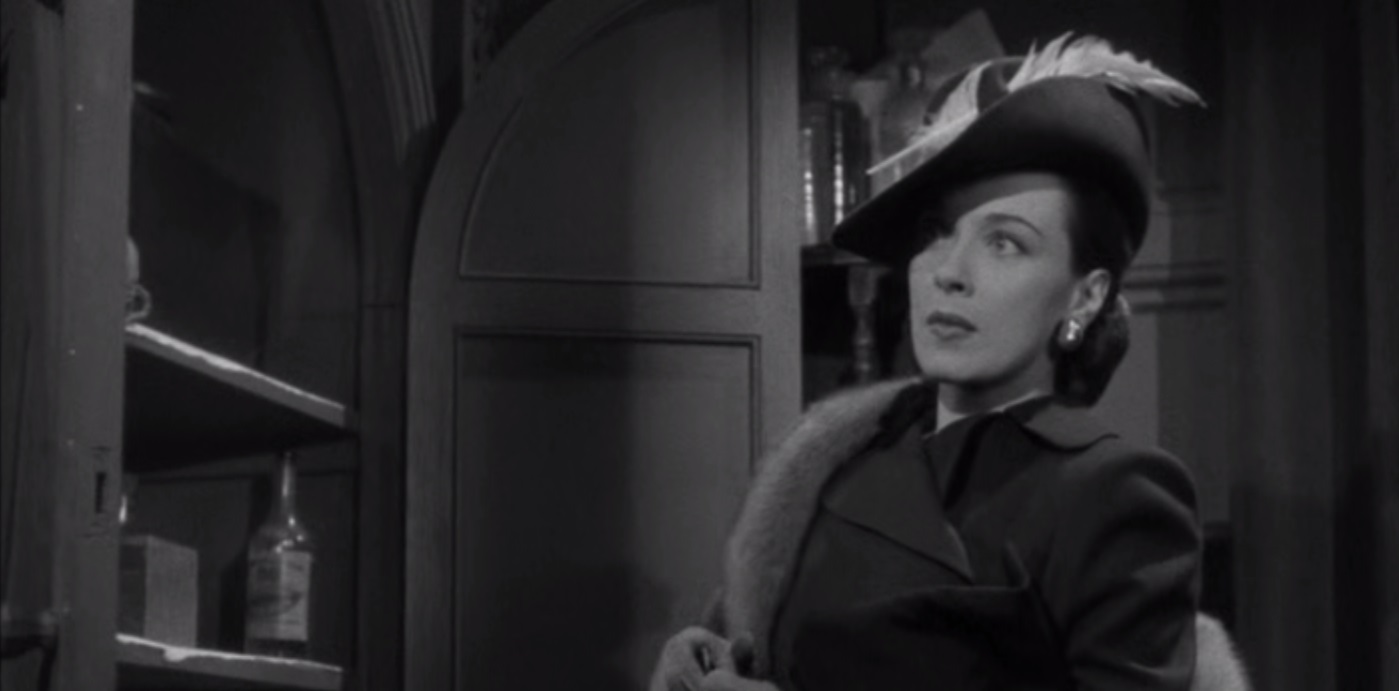
Dressed to Kill (Roy William Neill, 1946, 72 min.)
The Rathbone/Bruce series of Sherlock Holmes films didn’t exactly limp to a close, but it didn’t go out on a high note either. Dressed to Kill is a passable entry, featuring a pretty good adaptation of Sir Arthur Conan Doyle’s story “The Adventure of the Six Napoleons,” Basil Rathbone’s usual good performance as Holmes, and the series’s only tantalizing mention of one of the most intriguing characters in the Holmes canon, Irene Adler, “The Woman.” On hearing her name in the opening moments of the film, I had hopes that she would be introduced as a foil, but I was disappointed.
The story concerns a series of mysterious attacks on seemingly random people; the only connection between them is that they all purchased identical music boxes at an auction. When Holmes is brought into the case after an attack on Watson’s friend Stinky Emery (Edmund Breon), he discovers that the music boxes were made in prison by a convict who had stolen the Bank of England’s printing plates for making £5 notes. Before he could be captured, he hid them somewhere, and they were never found. Holmes deduces that the convict had somehow hidden a message inside the music boxes about where to find the plates, and he must figure out the code before the bad guys, led by Hilda Courtney (Patricia Morison), find them and print their own money.
The film’s best addition to the story is the way the code works. The music boxes all play the same melody, with minor variations, and Holmes has to figure out what the changed notes mean. The film is nicer to Watson than previous entries in that it allows him to suggest the key to breaking the code and the identity of Dr. S, albeit accidentally. (Of course, there’s a scene where he attempts to placate a frightened girl by making duck noises, so he doesn’t escape his usual comic relief role.)
It seems to me that the mystery was unnecessarily prolonged. The convict was captured a mere 15 minutes after stealing the plates, and he likely went in a single direction. Holmes could have easily reduced the search area on the basis of that evidence, and once he got the clue “Dr. S”—detailing a location among the bookshelves of an unknown doctor—it shouldn’t have been so difficult to figure out what the code meant. But that easy solution would have made for a very short film.
Things were getting sloppy by the end of the series. There are some noticeably odd cuts that might have resulted from the restoration process—these films were all restored by the UCLA Film and Television Archive—but they might just as possibly result from an editor instructed to finish the film in a hurry. Patricia Morison’s accent leaves much to be desired, and there’s an odd bit of unnecessary narration at the beginning. But the film contains at least one marvelous scene—Stinky Emery’s death—and the process by which Holmes figures out the code is interesting, if, as I mentioned, unnecessary. The film’s title has absolutely nothing to do with the film itself; I’m sure the reason behind it would make a good story.
And this was it for the series (although I still have four to go as of this writing). Director Roy William Neill would finish one more film before dying of a heart attack in late 1946. Basil Rathbone would never really overcome being typecast, appearing in a handful of films before his death in 1967. Nigel Bruce had always played bumbling Brits, and he continued to do so until his death in 1953.
Baker Street Regulars (actors who appeared in more than two films in the series as different characters):
Wilson Benge, 5th of 5 appearances (as Minister on museum tour)
Harry Cording, 8th of 8 (Hamid)
Holmes Herbert, 6th of 6 (Ebenezer Crabtree)
Leyland Hodgson, 7th of 7 (tour guide)
Olaf Hytten, 6th of 6 (Alfred, auction house bookkeeper)
Boyd Irwin, 3rd of 3 (detective with X-ray photos)
Sally Shepherd, 3rd of 3 (Tobacconist)
Ian Wolfe, 4th of 4 (Commissioner of Scotland Yard)
Frederick Worlock, 6th of 6 (Colonel Cavanaugh)

